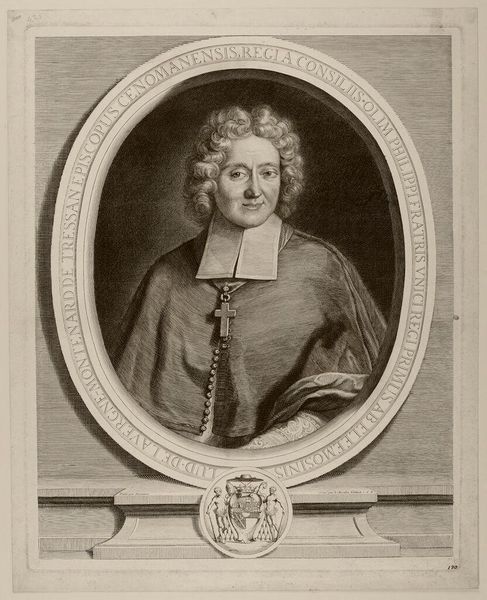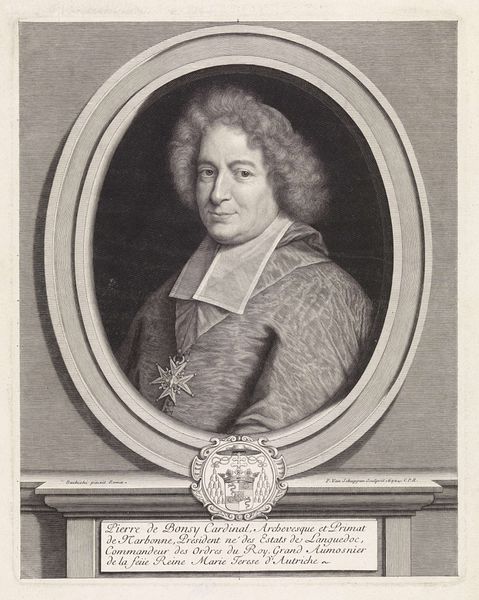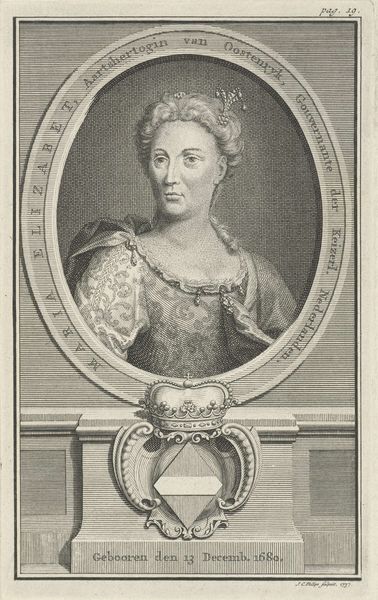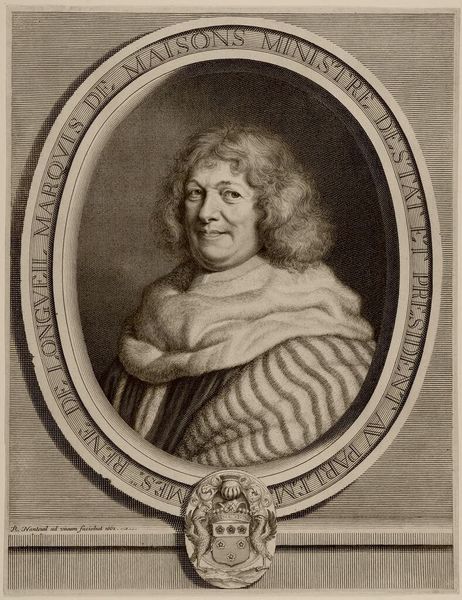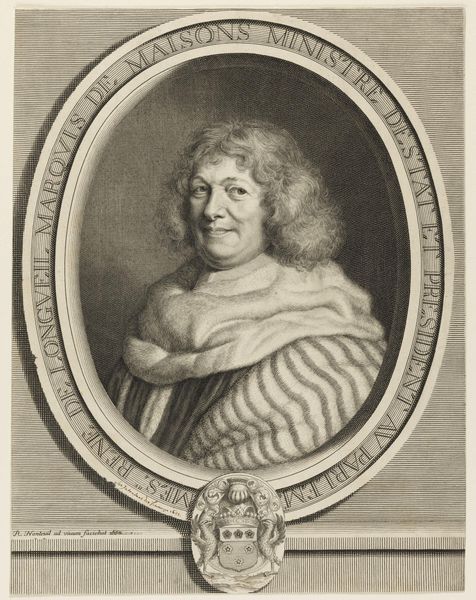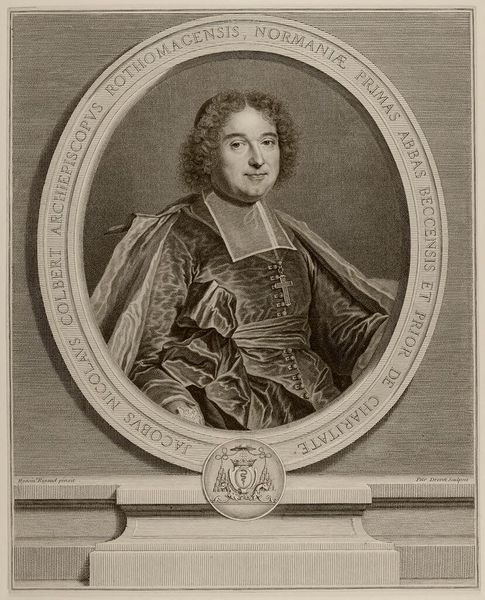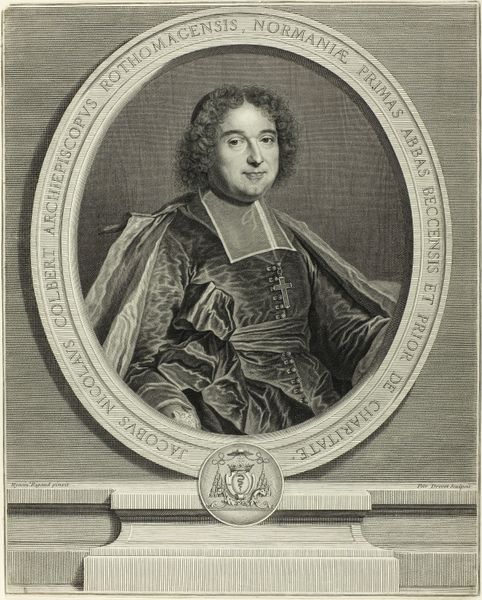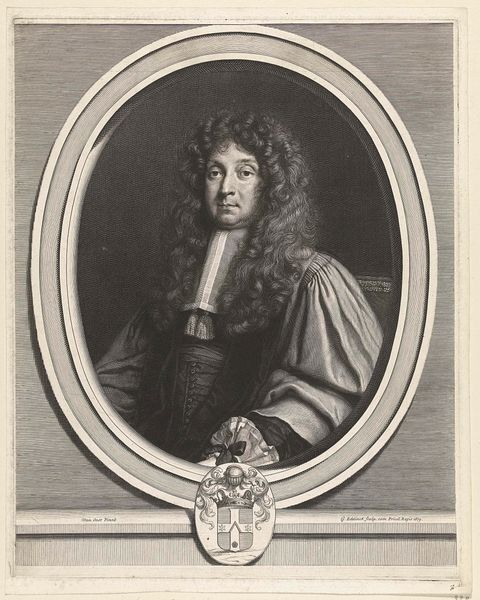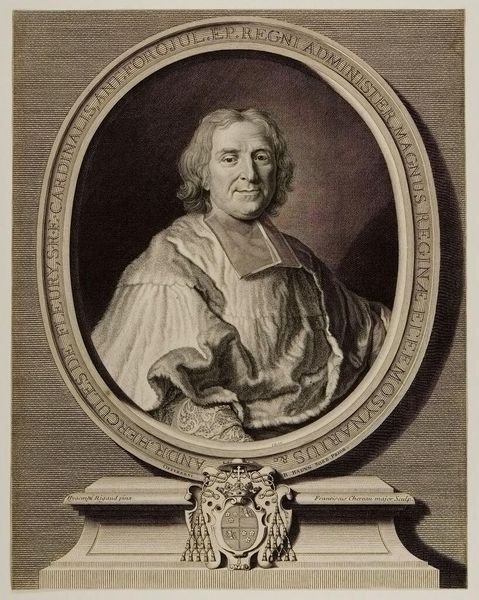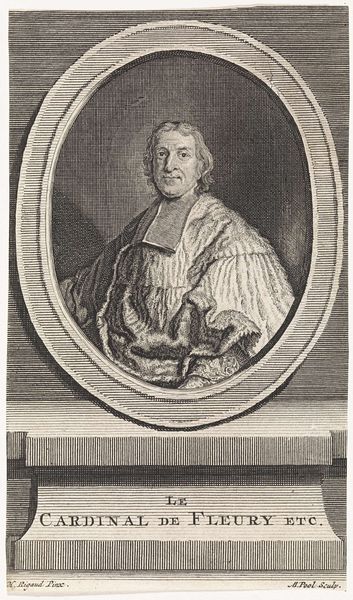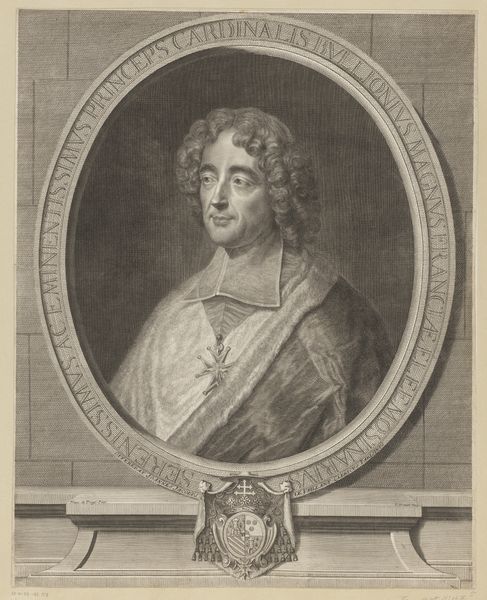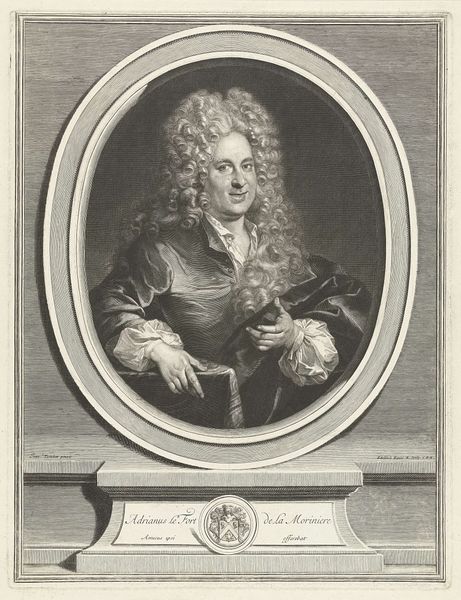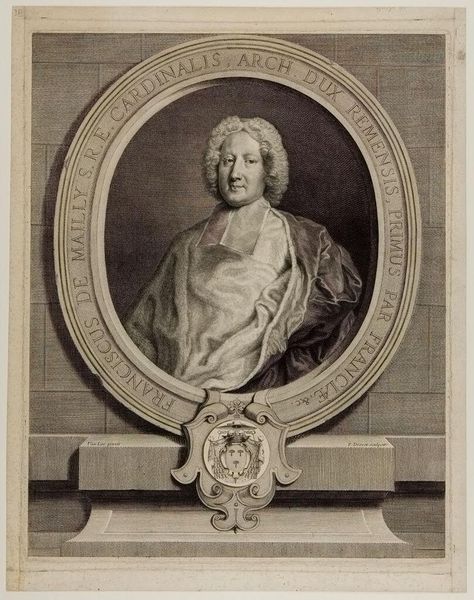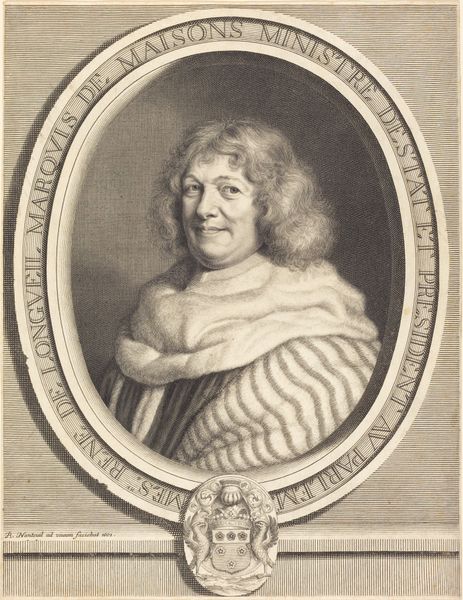
metal, paper, engraving
#
portrait
#
baroque
#
metal
#
old engraving style
#
paper
#
historical photography
#
line
#
history-painting
#
engraving
Dimensions: height 406 mm, width 320 mm
Copyright: Rijks Museum: Open Domain
Curator: Right, let's talk about this engraving. It's a portrait of Louis de La Vergne-Montenard de Tressan, made sometime between 1666 and 1707. Gérard Edelinck, a master of the baroque style, created it. Editor: My goodness, what a wig! It has a certain softness despite the sharp lines of the engraving... A bit severe though, don't you think? Curator: I wouldn't necessarily say severe. It certainly conveys a sense of formality and the engraver used a delicate balance between the precision of the lines and the texture of the face. You know, it's interesting to consider the techniques here. Editor: Oh, the lines! Yes, they construct volume and shadow with impressive accuracy. I imagine it required an immense level of detail for a master such as Edelinck, as you mention. And this gives me the sense of light; it makes the paper look quite metallic, doesn’t it? Curator: Exactly! He likely used metal plates for engraving the piece; in fact, the entire composition seems intended to broadcast status, power. Consider the text surrounding the oval frame – notice anything? Editor: Yes! It’s an inscription... Almost looks like the man’s credentials. Oh, “Bishop of Tressan”. And that ornate coat of arms at the bottom just cements the whole effect. Curator: It is! Edelinck was brilliant at crafting these kinds of composed portraits. It tells us so much about not only de Tressan himself but also how status was presented in that era. What do you take away overall from this particular work? Editor: For me, there’s this subtle dance between the rigidity of social rank and the intimate, fleeting nature of a person, trapped somewhere in those lines. Curator: I agree wholeheartedly, perhaps that makes it relevant across ages as more than just a historical record.
Comments
No comments
Be the first to comment and join the conversation on the ultimate creative platform.
